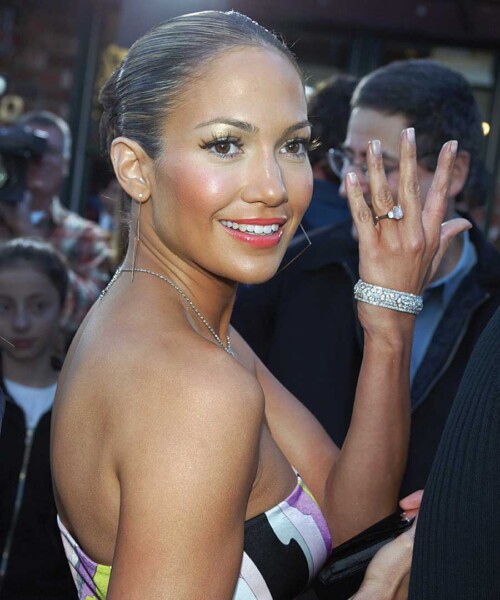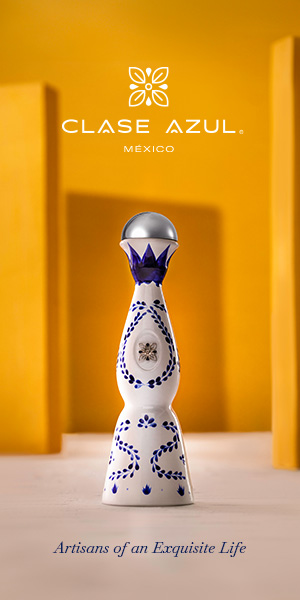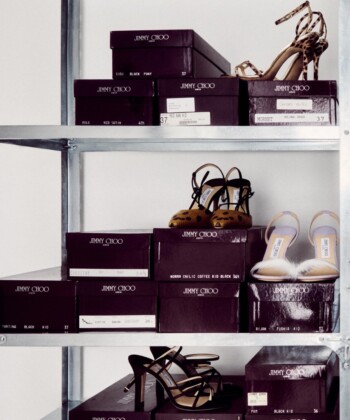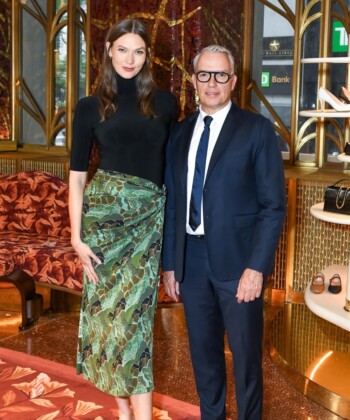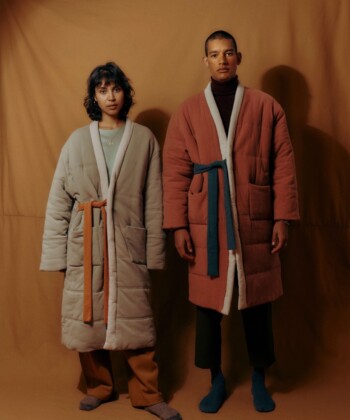Surely you’ve seen the headlines: Recent sales of important pink diamonds at auction have been making international news. For example, Christie’s Geneva sold a 19-carat emerald-cut stone to New York jewelry house Harry Winston in 2018. Now known as the Winston Pink Legacy, the gem fetched more than $50 million and currently holds the reigning world record price per carat.
But we can actually trace our fascination with pink diamonds back to 2002, when a besotted Ben Affleck proposed to Jennifer Lopez with a 6.1-carat pink diamond engagement ring (from Harry Winston, naturally). It didn’t ignite a trend, per se. There are so very, very few pink diamonds in existence—they represent just 0.03 percent of the global annual production of diamonds—and those that are available tend to be the domain of tech tycoons, European monarchs, and celebrity brides. But the Bennifer bauble did thrust pink diamonds into the mainstream spotlight, dazzling pop-culture aficionadas with their beauty and glamour, while prompting connoisseurs to add some color to their jewelry wardrobes, asset portfolios, or both.
Today, 90 percent of the world’s pink diamond supply comes from a single source: the Rio Tinto Argyle mine in Western Australia. By year’s end, this will no longer be the case. The mine is set to close later this year. “Argyle diamonds are known as the gold standard for pinks,” says Quig Bruning, a jewelry specialist at Sotheby’s. “I would anticipate that once the reality of the closure of this particular supply starts to sink in by 2021, 2022, prices will go up. I’d imagine it wouldn’t be dissimilar to what happens to an artist’s market after he or she passes away.”

Earrings with Argyle pink and white diamonds in platinum and 18k rose gold, price upon request, Calleija Jewelers.
Last October, a select group of jewelers, retailers, and diamantaires was invited to bid on what will probably be the last significant hoard of pink diamonds to come from the mine. Known as the Argyle Pink Diamonds Tender, an annual event since 1984, the competition for the 2019 stones was fierce. Totaling 56.28 carats across 64 remarkable stones, many display the most desirable pink hues (think: bubblegum and raspberry), not to mention reds, the absolute rarest diamond color you can get your hands on. Private viewing appointments were held in Singapore, London, Perth, and New York City. (DuJour was asked not to disclose the hotel that played host to the New York tender, but every one of its 23 floors had a security detail, to say nothing of the guards looking on inside the suite.)
“It’s a very unique opportunity to acquire the rarest diamonds in the world,” says jeweler John Calleija, who has boutiques in London, Sydney, and on Australia’s Gold Coast. As such, it’s not uncommon for tender invitees to shed tears at the sight of such precious cargo. And now that the mine is closing? “Collecting Argyle pink diamonds has reached a frenzied pace,” says David Shara, owner of Optimum Diamonds in New York, whose elite clients include the author Nicholas Sparks. Sparks, says Shara, “came up with the concept of creating the world’s greatest and rarest fancy colored diamond earring collection about seven years ago. His main focus was the Argyle mine.”
Argyle tends to produce smallish stones (they rarely exceed two carats), but they’re of a remarkable color quality and expertly cut into everything from heart shapes to cushions and ovals. “The great attraction is that pinks are both beautiful and, being oftentimes small, wearable without being ostentatious,” observes Jody Wainwright, director of Boodles, the heritage British luxury jeweler established in 1798. “This appeals to a certain buyer, but the investment angle is also close to the surface.”

Argyle pink and white diamond cuff, price upon request, Martin Katz.
“There is no doubt in my mind that due to their extraordinary rarity, spectacular color, and legacy, their prices will continue to rise,” Shara says. “We are seeing lots of younger high-net-worth individuals flocking to them for jewelry as well as investment.”
“I’ve had a few collectors who purchased Argyle pink diamonds as part of their long-term investment strategy,” says Jordan Fine of JFINE, a jeweler specializing in colored diamonds in New York City. “One particular gentleman purchased a set as his children’s college savings plan. Now his kids are about to go to college, and he doesn’t want to part with them.”
If you’re likewise intrigued by the prospect of acquiring an Argyle pink diamond from the standpoint of long-term investment and estate planning, Brett O’Connor, senior international jewelry director at Bonhams, notes that “a diamond, although a very hard substance, can be scratched, chipped, or abraded through normal wear, thereby lowering the clarity and also the value. So to truly protect the investment, it should be kept in a secure location and not worn.”
But that approach might prove impossible if your passion for pink runs deep. “The appreciation of any asset is absolutely a question we discuss with our clients, but the most important advice is to follow one’s passion,” Bruning says. “Jewelry is meant to be worn… The savvy buyers buy pieces they love.”


























